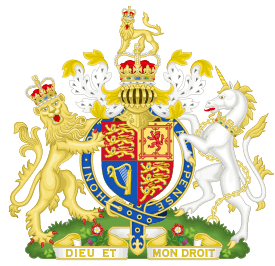Re A (conjoined twins)
| Re A (conjoined twins) | |
|---|---|
 | |
| Court | Court of Appeal of England and Wales |
| Decided | 22 September 2000 |
| Citation(s) | [2001] 2 WLR 480, [2000] 3 FCR 577, [2000] HRLR 721, [2001] Fam Law 18, [2000] Lloyd's Rep Med 425, [2001] Fam 147, [2000] EWCA Civ 254, 9 BHRC 261, (2001) 57 BMLR 1, [2000] 4 All ER 961, [2000] Lloyds Rep Med 425, [2001] 1 FLR 1, [2001] UKHRR 1 |
| Court membership | |
| Judge(s) sitting | Lord Justice Ward, Lord Justice Brooke, Lord Justice Robert Walker |
| Keywords | |
| Necessity, Medical law | |
Re A (conjoined twins) [2001] 2 WLR 480 [1] is a Court of Appeal decision on the separation of conjoined twins. The case raised several legal, ethical and religious dilemmas including whether it would be permissible to kill one of the children to save the other,[2] and whether it was permissible to act against the wishes of the twins' parents.
Gracie and Rosie Attard, who were born on 8 August 2000, were conjoined twins who were joined at the abdomen.[3] During legal proceedings, the twins were given the public pseudonyms Jodie and Mary, respectively.[4] The medical evidence indicated that Gracie was the stronger sibling who was sustaining the life of Rosie. Rosie had only survived birth due to a shared common artery that enabled her sister Gracie to oxygenate blood for both twins. If surgically separated Gracie had a 94% survival rate but Rosie was guaranteed to die. However if they were left conjoined then Gracie's health, which was already rapidly deteriorating, was predicted to fail before they were six months old. Gracie's death would inevitably result in Rosie's.
Judgment
At first instance, Mr Justice Johnson was left to decide the case without any direct precedents to guide him[5] but reasoned by analogy with Airedale NHS Trust v Bland where it was declared acceptable to remove life support. Johnson ruled that separation would not be murder but a case of "passive euthanasia" in which food and hydration would be withdrawn.[6]
The Court of Appeal rejected this analysis but the three judges who presided over the case gave very different legal reasoning. Lord Justice Alan Ward invoked the concept of self-defence suggesting that "If [Gracie] could speak she would surely protest, Stop it, [Rosie], you're killing me."[6] Lord Justice Brooke relied upon R v Dudley and Stephens and invoked necessity as a defence. Lord Justice Robert Walker focused upon the intention of the surgeons in concluding that surgery could go ahead.[5]
Result
The operation to separate the twins took place on the 7th November 2000.[3] As expected, Gracie survived the operation and Rosie died. Rosie's remains were later buried on the Maltese island of Gozo.[5]
See also
References
- ↑ "Re A (Children) (Conjoined Twins: Surgical Separation) [2001] 2 WLR 480 (22 Sept 2000)". Bailii.org. Retrieved 2013-01-30.
- ↑ Mcallister, J.F.O. (2000-09-18). "Kill Mary to Save Jodie?". TIME magazine (subscription required). Retrieved 2010-09-18.
- 1 2 "Jodie and Mary: The medical facts". BBC News. 2000-12-07. Retrieved 2015-10-21.
- ↑ "Law decided fate of Mary and Jodie". The Guardian. 2002-02-05. Retrieved 2015-10-06.
- 1 2 3 "Siamese Twins Case Presents Serious Legal Doubts". Hcourt.gov.au. Retrieved 2015-10-21.
- 1 2 Annas, George (April 5, 2001). "Conjoined Twins - The Limits of Law at the limits of Life". New England Journal of Medicine (subscription required). 344: 1104–1108. doi:10.1056/NEJM200104053441419.
External links
- Text of the judgement in this case, and the refusal of leave to appeal, from BAILII.
- Court of Appeal judgment
- Paul Harris. "Amazing Grace: three years on". London: Daily Mail. Retrieved 21 Oct 2015. (Update on surviving twin.)